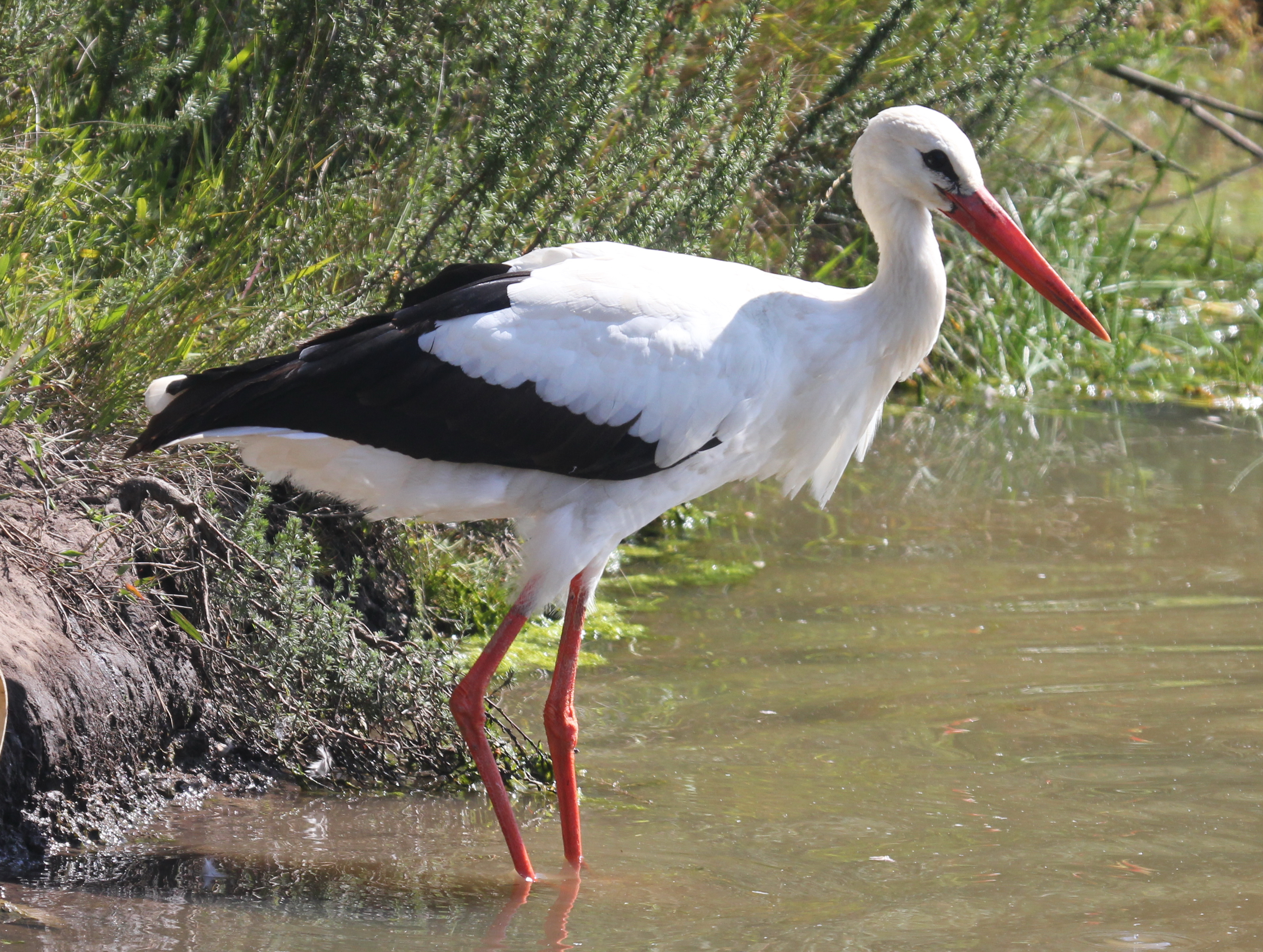16 May 2019
Ce n’est pas normal
Changes to life in La France Profonde.
By Richard Pooley

“C’est encore l’hiver”, I said to Nicole at her fruit and vegetable stall in the village market last Thursday. She agreed, hunched against the cold rain blowing across her produce: “Ce n’est pas normal”. I was not in France for much of the winter but since returning in mid-March I have often been told it was an abnormal one. As in the UK, there were a couple of warm, dry weeks in February and there was much less rain than usual. However, the main causes of French whingeing have been the cold days and occasional freezing nights of much of April and early May. Valerie at the lower boulangerie accused me of bringing the “English weather” from the UK. Inevitably, the weather had turned warm and dry by last Sunday and, if the Météo’s forecast is to be trusted, will remain so for the rest of the month. So, Winter has gone. But the claim that “It’s not normal” has not.
The biggest blow to normal life in the village over the past six months was not meteorological though. Our chocolaterie/pâtisserie closed at the end of December without warning. I have only ever seen the small Monsieur Lage at the first floor window above his chocolate shop, peering out over the market square. The word is that it was his wife, Lage by marriage and large by nature or nurture, who decided that he should retire. She is certainly no Juliette Binoche, gorgeous and warm-hearted chocolatier in the 2000 film Chocolat (partly filmed further down the Dordogne valley… and in Wiltshire). As ruler of the shop, Mme Lage had, no doubt, had enough of dealing with customers who required her to break off from some tale of woe to cater to their often uncertain needs. Even so, we shall miss her husband’s delicious confections.
It’s seldom that French dinner parties end with a pudding or dessert course fait à la maison. Instead one is offered some pâtisseries bought in a place like chez Lage. In fact, French guests to our house are often astonished that we serve them a pudding made by my wife or me. It’s not just that the English can’t cook. Nor that we yet seem able to produce traditional French dishes such as crumble and crème brûlée. It’s that I always have to give them a 5-minute lecture on the origin and meaning of the word “pudding”, which for them is a sweet, moist yet mostly tasteless by-product of the boulangerie (literally; I have had one made from stale croissants).
Further evidence that things are not normal was provided by a white stork. I had seen it myself in mid-November. The bird was poking the meadow by the side of one of the two streams which border the village and on the opposite side of the road from our small supermarket. I left the next day and had forgotten about it until I met our mayor on my return in March and got a briefing on what had been going on in my absence. First up: la cigogne! Apparently, the mairie had been flooded for a couple of months with reports of sightings of this bird. I was amazed. As keen amateur ornithologists, my wife and I have been disappointed to find little interest in birds among our neighbours over the past six years. Unless, of course, they can be eaten. Or used in village debates. Two years ago I managed to get a close-up photograph of a sparrow-hawk trying but failing to fly off with a large rat in its claw. It was in the garden of my neighbour, Hugues. When I showed him the photo, he was only interested in the rat. It was proof that the mayor’s newly-installed chicken run, which borders the other side of his garden, was attracting vermin and thus something else to fuel their long-running feud.
So, why the excitement about the stork? Nobody I have spoken to can remember seeing one here before. Neighbour Hugues and boutique owner Corinne, both of whom were born in the village over fifty years ago, told me how enchanted they were to see a bird which figured prominently in stories they read as children. If you are lucky (so far, to my chagrin, I have not been), you may see and hear cranes flying overhead twice a year, heading north in April and back south in October. But not white storks. Their migration routes to and from Spain and Africa are to the east along the Rhone valley or to the west along the coast. And they normally arrive in March and leave in late August. Up until the early 20th century the region where they would nest in greatest numbers was Alsace-Lorraine. But then they went into rapid decline. In one year in the 1970s only nine breeding pairs were recorded in the whole of France. That figure rose to 973 in 2004 and around 2,800 in 2017. Over 200 were reported to have nested in the summer of 2017 in a ruined, marsh-girt 13th century castle in Normandy. So, who was this lonely bird probing for frogs, voles and beetles across the road from Spar three months after it was supposed to have been in Africa? Probably a young one, blown off its southern course and finding that there was plenty to eat here even in the middle of winter. The sightings ceased in February apparently. Perhaps it headed north. After all, white storks started arriving in Alsace in February this year, a month earlier than normal. Or it was caught by a fox or a dog, or shot by a hunter. I would not be surprised though if we see another one or two in future winters. 8 white storks were recorded in 1996/7 as breeding and then overwintering in a nature reserve near Montpelier, close to the Pyrenees. In 2003/4 there were 172. I can’t find a more recent figure but see that the local tourist board make much of the fact that white storks can be seen all year round.
A 2015 article in the Science et Avenir magazine predicted how France would feel and look in 2050 should the climate continue to change without significant action by humankind. Summer heatwaves would be much longer and there would be fewer abnormally cold winter spells. Paris would have the climate experienced by Toulouse today. Toulouse would be like Barcelona, Bordeaux like Porto and Biarritz like Savannah in the USA (what a lovely image: Basques fighting bulls in the wet heat of coastal Georgia). The Chinese maybe should think again about buying up Bordeaux vineyards. According to Science et Avenir, in 2050 western Brittany will be a better place to grow the vines currently to be found north and east of Bordeaux. The Champagne houses have already bought land in Kent and Sussex precisely because these chalklands might be better terrains for sparkling wine than those around Épernay in a hotter future.
If the last six years are any guide, Paris might be getting those longer canicules a lot sooner than 2050. Certainly, here, two hours drive north of Toulouse and 5 hours drive south of Paris, as my diary and my wife’s garden photographs attest, it was noticeably hotter and drier for longer in the summers of 2017 and 2018 than in those of 2013 and 2014. The grass I sowed in the spring of 2014 survived that summer. The grass I sowed last year, despite being especially adapted to drought, died in the 40°C heat of August. “Ce n’est pas normal”.
Science et Avenir also described how the Mediterranean landscape would spread north. At present the countryside changes at Valence, a city in the Rhone valley: “At Valence, the Midi begins”. But by 2050, the landscape around Auxerre in Burgundy would look like that around Valence now. As it happens, our village is on almost exactly the same latitude as Valence (both are a few kilometres south of latitude 45°, half-way between the Equator and the North Pole). We are at the bottom of the Dordogne river valley and the landscape is too lush to be described as Mediterranean. But up on the limestone plateaux to the south, among the scrubby, twisted oaks and stony fields, it certainly looks, feels and smells like Provence.
And sounds it. When we first came here six years ago, a walk on those southern plateaux in the summer would always be accompanied by the raucous noise of cicadas. Their so-called singing can be as high as 90 decibels; more a chainsaw than a chanson. Male cicadas start sawing when the temperature rises above 22°C for a good length of time. In the summer of 2015 (the same year that the Science et Avenir article was published), we realised that we were hearing cicadas in our garden for the first time. And each summer since we have heard them both in the valley and on the plateaux to the north of us. Recent research has concluded that cicadas in France are spreading north at a rate of approximately 15 kms a year and have already reached Lyon, 220 kms south of Auxerre. At that rate, the countryside around Auxerre will start to sound like that around Valence in 2035 rather than in 2050.
Back to the birdlife. Whilst I only heard a cuckoo for the first time this year last weekend, other migrants – swallows, swifts, house martins, nightingales, redstarts, kites, golden orioles, hoopoes – have made themselves known up to two weeks earlier than in previous springs. The number of nightingales has burgeoned while I’ve lived here. I took some English friends on a short walk out of the village last Friday afternoon. They had never heard a nightingale, despite living in the Oxfordshire countryside for much of their lives. I promised we would hear one. We heard four.
Most astonishing for me last year was the sight of a fluffy young tawny owl perched close to the trunk of a pollarded plane tree. It was on 4 April and the tree was naked of leaves. I did the calculation. Its mother must have laid the egg which produced this youngster at the beginning of February, far earlier than normal. The same pair of adults, who call day and night throughout the winter, successfully produced another chick this year (neighbour Hugues now makes these and other Nature notes when I’m away – a convert). I saw it on the lip of its nest hole for a few hours on 13 April. It fledged the next day, still abnormally early.
I wonder how many villagers care much about these changes in their natural environment. Certainly not as much, I’ll wager, as they care about the loss of their chocolaterie/pâtisserie. But I do sense unease. It will be interesting to see how well the Greens do locally in the European Elections later this month. I’ll let you know.


